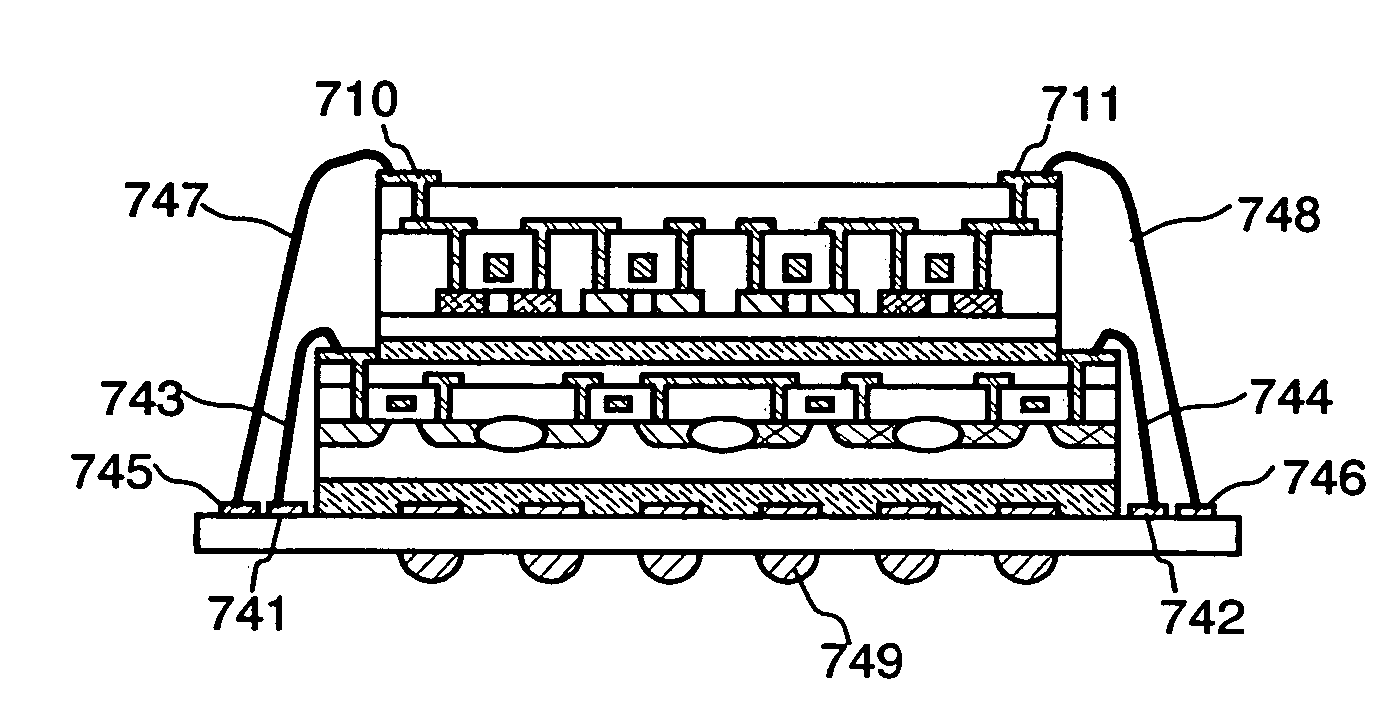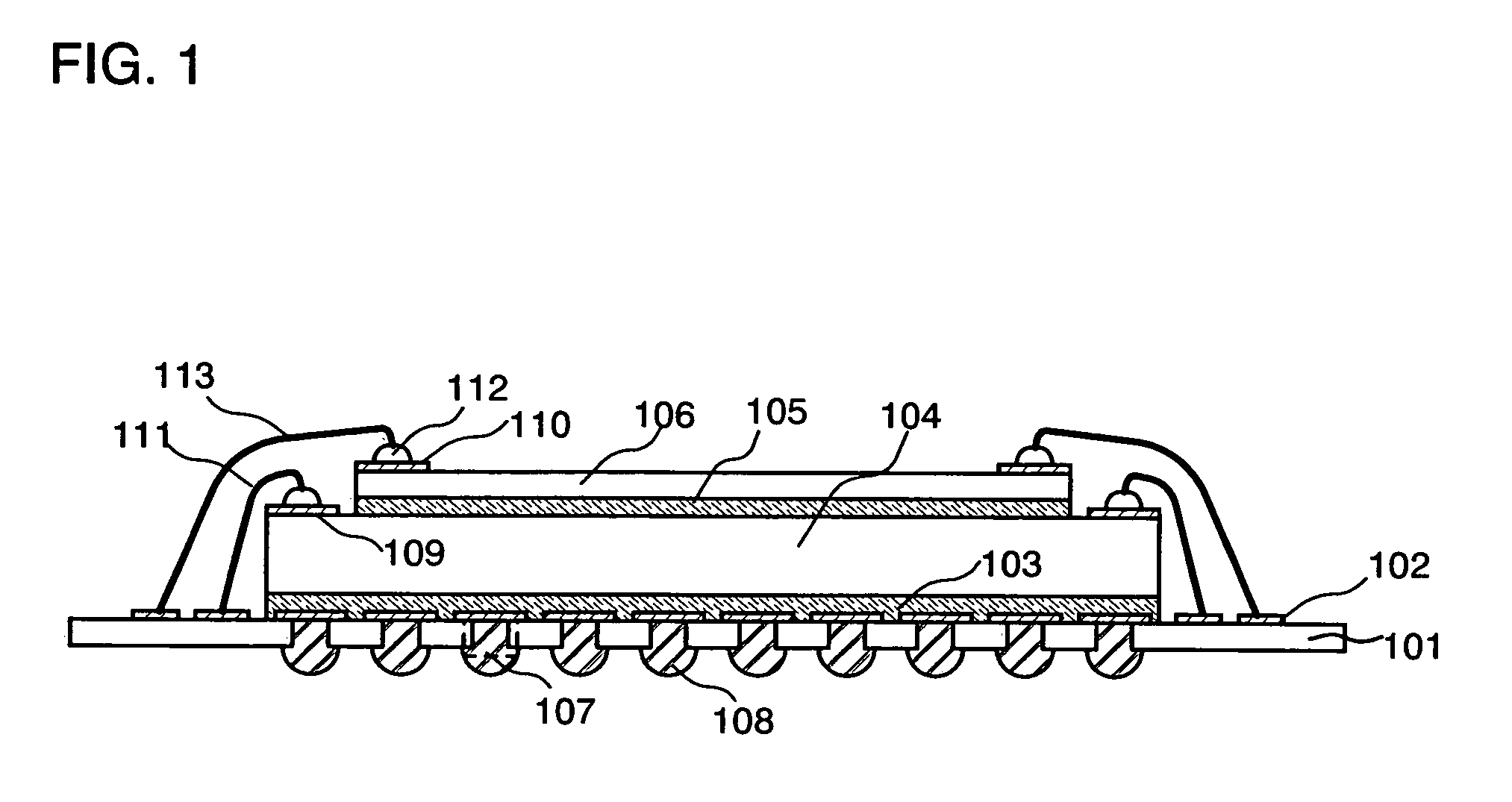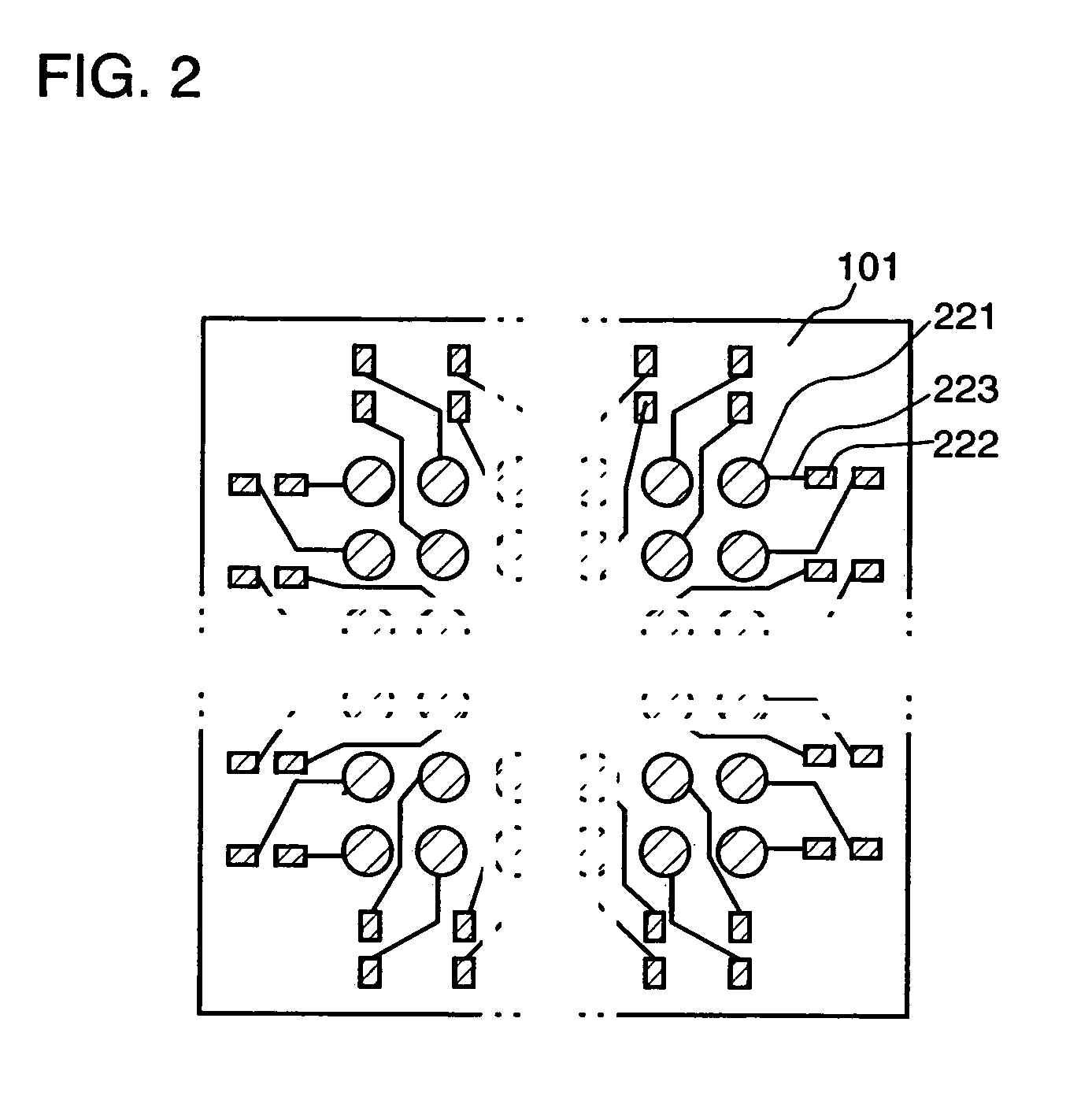Semiconductor device and manufacturing method thereof
a semiconductor and semiconductor technology, applied in semiconductor devices, semiconductor/solid-state device details, electrical apparatus, etc., can solve the problems of reduced yield, reduced mechanical strength of semiconductor elements, and increased volume of packages, and achieves high integration, low cost, and small volume
- Summary
- Abstract
- Description
- Claims
- Application Information
AI Technical Summary
Benefits of technology
Problems solved by technology
Method used
Image
Examples
embodiment mode 1
[Embodiment Mode 1]
[0102]In the present embodiment mode, a semiconductor device of the present invention is described with reference to FIG. 1. FIG. 1A shows a cross sectional view of a semiconductor device in the present invention. A semiconductor element 104 in which an integrated circuit is formed by using a semiconductor substrate is provided over an insulating substrate (interposer) 101 through a wiring layer 102 and an adhesive layer 103 such as a thermo-compression bonding sheet. A semiconductor element 106 in which an integrated circuit is formed by using a semiconductor thin film is provided over the semiconductor element 104 through an adhesive layer 105 such as a thermo-compression bonding sheet. A through-hole 107 is formed in the insulating substrate, and a wiring layer 102 and an exterior terminal 108 such as a solder ball and the like are connected through the through-hole 107.
[0103]A known material such as polyimide substrate, an alumina substrate, a ceramics substra...
embodiment mode 2
[Embodiment Mode 2]
[0111]In the present embodiment mode, a method for manufacturing a semiconductor device which is shown in Embodiment Mode 1 is described. A semiconductor device of the present embodiment mode has a face up mode for all the semiconductor elements.
[0112]First, a method for manufacturing a semiconductor element (a first semiconductor element) in which an integrated circuit is formed by using a semiconductor substrate is shown in FIG. 4A. After forming a wiring portion 412 on an insulating substrate 411, the semiconductor element (the first semiconductor element) 413 in which an integrated circuit is formed by using a semiconductor substrate is bonded with an adhesive layer 414 such as a thermo-compression bonding sheet. A through-hole (107 in FIG. 1A) for connecting an exterior terminal and a semiconductor element is formed in the insulating substrate 411. The exterior terminal serves to electrically connect wirings in a mounted substrate and semiconductor elements. ...
embodiment mode 3
[Embodiment Mode 3]
[0131]In the present embodiment mode, a semiconductor device having a different structure from Embodiment Modes 1 and 2 is described. In the present embodiment mode, a point that a first semiconductor element has a flip chip mode (face down mode) is different form that of Embodiment Mode 2.
[0132]In FIGS. 5A to 5D show cross sectional views of a semiconductor device in the present embodiment mode. A wiring portion 502 over an insulating substrate 501 and an electrode pad 504 of a first semiconductor element 503 containing a semiconductor substrate are connected with a connection terminal 505 such as a bump. Note that the first semiconductor element 503, the insulating substrate 501, and the wiring portion 502 formed over the insulating substrate are fixed with a resin and the like 506. Further, the insulating substrate 501 includes a through-hole (not shown) for connecting an exterior terminal and a semiconductor element; the wiring portion 502 and the exterior ter...
PUM
 Login to View More
Login to View More Abstract
Description
Claims
Application Information
 Login to View More
Login to View More - R&D
- Intellectual Property
- Life Sciences
- Materials
- Tech Scout
- Unparalleled Data Quality
- Higher Quality Content
- 60% Fewer Hallucinations
Browse by: Latest US Patents, China's latest patents, Technical Efficacy Thesaurus, Application Domain, Technology Topic, Popular Technical Reports.
© 2025 PatSnap. All rights reserved.Legal|Privacy policy|Modern Slavery Act Transparency Statement|Sitemap|About US| Contact US: help@patsnap.com



